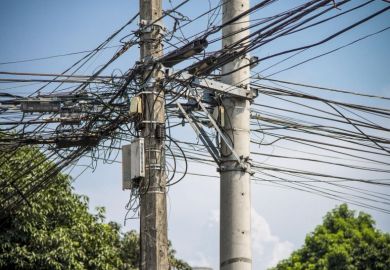The extra university places created through Australia’s fee and funding reshuffle are “largely illusory”, according to an education consultant who said that the income universities receive for teaching will “decline substantially” while the government saves itself A$722 million (£549 million) a year.
Former bureaucrat Mark Warburton delivered a scathing assessment of the government’s proposals during an online forum hosted by the Melbourne Centre for the Study of Higher Education. The package will ostensibly bankroll an extra 39,000 higher education places over four years by cutting average government subsidy rates, increasing many student contributions and aligning overall funding with the cost of teaching.
But Mr Warburton said that the government had overegged the benefits, partly through its habit of counting a three-year degree as three distinct university places instead of a single ongoing place – as “any sensible accounting mechanism” would suggest.
He said that, when the proposals were fully implemented in 2024, they would have funded about 15,000 new subsidised university places. Meanwhile, the cumulative impacts of the 2017 capping of university teaching grants would have removed the equivalent of 23,000 subsidised places.
“There really isn’t any growth in student places,” Mr Warburton told the forum. “Not allowing any system growth over the next half-decade is a policy to reduce higher education attainment levels. There’s little scope to meet future growth in…university age cohorts [or] additional demand arising from the Covid-induced economic slowdown.”
A former senior public servant with responsibility for higher education funding, Mr Warburton estimated that the revamped funding arrangements would deliver universities A$493 million less in real terms than they had pocketed in 2018 for educating about 12,000 fewer students. He said that overall student contributions would rise by about A$564 million.
Meanwhile, the package would save the government A$722 million a year by 2024, after allowing for the money spent underwriting additional student loans and financing a proposed A$900 million industry linkage fund. This would complement the A$266 million the government had already saved itself through the ongoing effects of the 2017 capping of places.
Former University of Melbourne deputy vice-chancellor Frank Larkins told the forum that his own modelling had produced figures “in the same ballpark”.
“More precise estimates require access to more data,” he said. “But we’re getting a consistent message that there is a significant shortfall to universities, and that students are carrying more of the responsibility for education.”
Mr Warburton said that the government should invest the savings from its proposals in university research, which faced a catastrophic loss of revenue because of the pandemic’s disruption of international student flows – exacerbated by the loss of cross-subsidies from domestic teaching grants.
“It’s poor policy to reduce university revenue for teaching without dealing with the research funding issues that arise as a direct consequence of that proposal,” he said.
Mr Warburton warned that the proposed industry fund could be disbanded as quickly as it was created. “It could easily go the next time the government seeks savings,” he said. “It wouldn’t require legislative change or agreement from parliament.”
And he ridiculed the government’s policy of using fees to influence students’ course choices. “Could we just get the core funding mechanisms right, and stop all the peripheral noise? The efforts to use student contributions to create incentives…every couple of years [are] both silly and uninformed. The student contribution…is not an incentive mechanism.”
Register to continue
Why register?
- Registration is free and only takes a moment
- Once registered, you can read 3 articles a month
- Sign up for our newsletter
Subscribe
Or subscribe for unlimited access to:
- Unlimited access to news, views, insights & reviews
- Digital editions
- Digital access to THE’s university and college rankings analysis
Already registered or a current subscriber?








